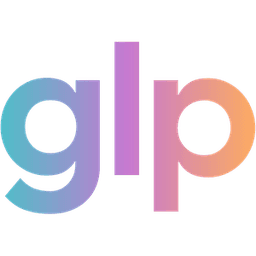Trump’s $150 Ozempic Plan: What’s Real (and What’s Not)
Author
glp winnerDate Published
- Twitter
- Facebook
- LinkedIn
- Instagram
- Copy Link

The internet exploded yesterday after President Donald Trump announced a deal to make GLP-1 weight-loss drugs — like Ozempic®, Wegovy®, and Zepbound® — more affordable. Headlines shouted “$150 a month Ozempic!” and social media went wild.
Here’s the real story behind the announcement — stripped of hype, jargon, and confusion.
Disclaimer: Information in this article reflects what’s currently known as of November 7, 2025. The federal plan to reduce GLP-1 drug costs - including the “$150 Ozempic plan” announced by President Trump - is still developing, and many details are being finalized by federal agencies, manufacturers, and state programs. Coverage dates, eligibility criteria, and final prices may change as new information is released. We’ll continue to update this page as more verified details become available.
What Trump Actually Announced
On November 6, 2025, Trump said his administration reached agreements with Novo Nordisk (maker of Ozempic and Wegovy) and Eli Lilly (maker of Mounjaro and Zepbound) to cut prices and expand Medicare coverage for GLP-1 medications.
According to multiple reports (AP News, Reuters, TIME):
- A new TrumpRx platform will launch for people paying cash (with or without insurance).
- Cash-pay price: around $350 a month for injectable GLP-1s like Wegovy and Zepbound, dropping toward ~$245 over time.
- Medicare users: the government will purchase these drugs at $245/month, allowing patient copays around $50.
- Future oral GLP-1 pills (not yet FDA-approved) could start at $149–$150/month for low doses once cleared.
In short: $150 is a real number — but it’s tied to pills that aren’t FDA approved yet..
What’s New — and What’s Still Pending
This deal is the first time Medicare will officially cover GLP-1s for obesity (not just diabetes). That’s a huge shift in policy. The White House says the change could save billions on obesity-related health costs.
But some parts are still being worked out:
- Timing: Some reports say Medicare coverage may begin in April 2026, but the true starting date is open-ended. This relies on how quickly the FDA can approve multidose Zepbound pens and the oral GLP-1 orforglipron.
- Eligibility: It’s likely to apply first to adults with a BMI ≥ 30 or with conditions like diabetes or heart disease.
- Medicaid: States can choose to “opt in” to the pricing model.
- Private insurance: Not covered by this deal — at least, not yet.
As for the TrumpRx site, outlets like ABC News report it could launch before the end of 2025.
What It Doesn’t Mean
This is where the fine print matters.
The $150/month price people are sharing online does not apply to Ozempic or Wegovy right now. That number is linked to oral GLP-1 pills that still need FDA approval — such as Eli Lilly’s orforglipron.
For now:
- Injectables cost roughly $350 cash or $50 with Medicare (once coverage starts).
- Oral versions will start near $150/month only after approval.
- Private plans may take months or years to follow.
So yes, this is a big move — but it’s not a magic switch flipping overnight.
Why This Matters
GLP-1s have transformed obesity care. Drugs like Wegovy and Zepbound mimic a natural hormone that helps control appetite and blood sugar. The problem? They’ve been wildly expensive, often over $1,000 a month.
If the new deal holds, Americans could pay closer to what patients in other countries pay — finally narrowing the global pricing gap.
Lower prices could also mean better access for millions of people living with obesity or type 2 diabetes. But experts say access will still depend on doctor visits, insurance rules, and supply. (STAT News)
The Key FAQs Everyone’s Googling
Q: What is Trump’s $150 Ozempic plan?
A: It’s a new pricing deal announced by President Trump that aims to lower the cost of GLP-1 drugs, including Ozempic®, Wegovy®, and Zepbound®. The $150/month figure refers to future oral versions — not today’s injectable drugs.
Q: Does this mean Ozempic now costs $150 a month?
A: Not yet. Injectables will start around $350 cash and may drop toward $245 over time. The $150 price applies only to upcoming oral GLP-1s that are still awaiting FDA approval.
Q: When will Medicare start covering GLP-1 weight-loss drugs?
A: Reports say 2026, possibly sooner, depending on how quickly CMS finalizes new coverage rules. Copays are expected to be around $50.
Q: Who’s eligible under the new GLP-1 plan?
A: Adults who meet obesity or diabetes criteria. Private insurance isn’t included yet, but Medicare and Medicaid will see the biggest changes.
Q: What is TrumpRx, and how does it work?
A: TrumpRx is a planned website where patients can buy GLP-1 drugs directly at discounted cash prices — roughly $350/month for injectables, trending lower over time.
Q: Are these drugs FDA-approved?
A: Ozempic®, Wegovy®, Mounjaro®, and Zepbound® are FDA-approved. The future oral GLP-1 pills mentioned in the deal are not yet approved and can’t be prescribed today.
Q: Will my insurance automatically lower my GLP-1 cost?
A: No — this deal affects federal programs (Medicare and Medicaid) and TrumpRx cash pricing. Private insurance plans make their own decisions.
Q: Why does this matter so much?
A: Because access to GLP-1s has been limited mostly to people who can afford them out of pocket. A lower federal price could set new benchmarks that reshape the entire market.
Bottom Line
The $150 Ozempic headline is catchy — but incomplete. What Trump announced this week could truly reshape how Americans access weight-loss drugs, but most changes are still months (or years) away.
If you’re currently using or exploring GLP-1s, keep your focus on verified details: FDA approval status, your provider’s advice, and real pricing once the rollout begins.
This is progress — but it’s not a done deal yet.
If you enjoy posts like these, you can subscribe to receive newsletter updates.
Sources
Keep Reading

FDA recalls compounded semaglutide and tirzepatide by ProRx LLC for sterility concerns. See if your vial’s affected and what to do next.

The difference between 503A and 503B compounding pharmacies, why it matters, and how to stay safe when getting GLP-1 compounded treatments.

Learn what’s changing in 2026 insurance plans for GLP-1 drugs and how to compare costs, coverage, and plan options to stay protected.
